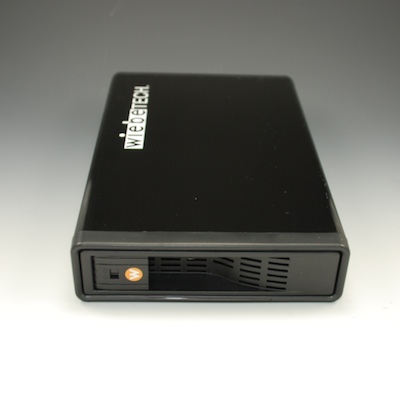Running naked (with hard drives)

Earlier in the week my cohort here at The Apple Core, David Morgenstern, wrote about living a bare drive lifestyle where "professional Mac users often use hard disk mechanisms like floppies." Count me in that group. I keep a lot of (non-traveling) hard drives in my office, most in silver anti-static bags, and swap them in and out of use with great frequency. I also change notebook hard drives more often than some people change their underwear, but I digress.
If you only have one or two external drives, then keeping them in an enclosure is best. It keeps the hard drive mechanism out of harms way and (sometimes) cools it with a fan. Hard drives also stand a better chance at surviving a fall than naked drives do. Also, I wouldn't recommend keeping your primary data backup on a bare drive under any circumstances or handling bare drives if you've every been described as "klutzy" or your house if very dry and you get a shock any time you touch anything metal.
With those disclaimers aside, there are tons of benefits to using raw drives. Drive enclosures can be expensive if you need a lot of storage or have a lot of small mechanisms laying around (especially if you need a lot of interfaces, i.e. FireWire). If you only access certain archival data periodically or don't need all your drives to be online simultaneously, then using raw drives can be beneficial.
I reviewed the WiebeTech RTX100-Q hard drive enclosure from WiebeTech on 20 January 2008 and found it to be the complete package. The "TrayFree" single bay enclosure features a quad interface (eSATA, dual FireWire 800, FireWire 400 and USB 2) and allows you to easily swap in and out 3.5-inch SATA hard drives.

If you need even quicker access to a drive or you're constantly swapping drives and pulling data then something smaller like WiebeTech's USB DriveDock v.4 (US$50, pictured below) may fit the bill. The diminutive adapter attaches to any 2.5 or 3.5-inch IDE, PATA or SATA drive mechanism and gives you a USB port on the other end.
Remember them?
[poll id=107]